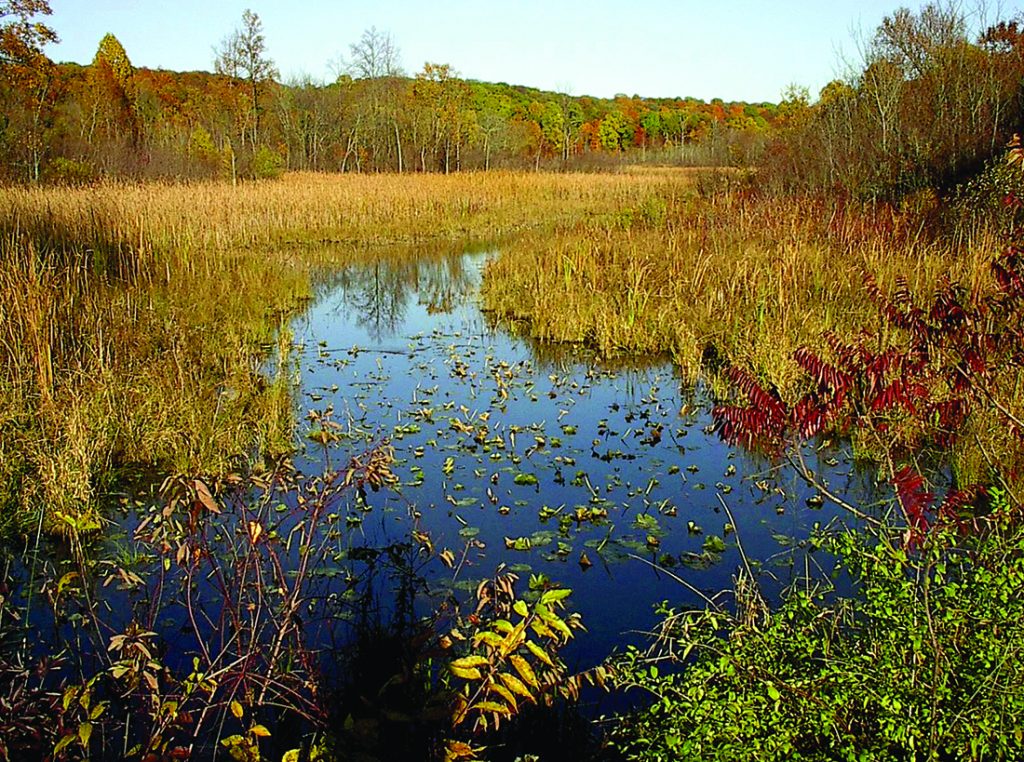Historically, wetlands have gotten no respect. Early U.S. settlers viewed wetlands as wastelands and thought filling them in would make the acreage more productive. Consider the number of negative connotations in the English language, such as being “bogged down” with work or “drain the swamp,” a favorite of politicians to refer to getting rid of a problem. Even Hollywood has thrown mud at wetlands by making them a setting for horror films. Remember “Swamp Thing” and “Creature from the Black Lagoon”?
Yet wetlands deserve our respect. These unique habitats, which include marshes, swamps, bogs and fens (basically any land covered by water or with saturated soil), play a critical environmental role. Among their many benefits, wetlands:

- Control floods and alleviate drought conditions. By acting like sponges, wetlands absorb runoff from rain and melting snow and then release it slowly.
- Reduce erosion. Rich in vegetation, wetland plants make the soil more stable. These plants also absorb the energy of waves and storm surges or water running downhill.
- Store carbon. Due to their active plant life and anaerobic soil, wetlands sequester large amounts of carbon, thus moderating climate change.
- Improve water quality. Wetlands absorb excess sediment from agricultural, septic and storm water before it enters groundwater or flows into nearby streams and rivers. They break down harmful pollutants and bacteria, resulting in higher quality water for drinking, fishing and swimming. In fact, wetlands are often referred to as “nature’s kidneys.”
- Provide important habitat to wildlife. More than one-third of endangered and threatened species in the United States rely on wetlands for survival. And many other wildlife use wetlands during part of the year for breeding and migration.
One reason wetlands are so attractive to wildlife is the availability of food. The breakdown of dead plant leaves and stems found in wetlands creates rich organic material that feed small aquatic insects, shellfish and fish. They, in turn, become dinner for larger species. In a nutshell, wetlands can be viewed as ecological smorgasbords that support an extensive food chain.
The Edward Lowe Foundation has 550 acres of wetlands, which is home to a large number of species listed as endangered, threatened or of special concern. Some quick examples: Blandings turtles, box turtles, several varieties of rare orchids and eastern massasauga rattlesnakes, which received federal listing last fall. To maintain our wetlands, we employ a number of land management practices, such as creating and enhancing vernal ponds, carrying out various erosion control techniques and conducting prescribed burns. The latter is important to prevent the wetlands from eventually reverting to woodlands, which is the climax ecosystem in Michigan.
Although ecological succession has reduced some of the state’s wetlands, their major threat is overdevelopment. Prior to European settlement, Michigan had about 10.7 million acres of wetlands. Today that number has dropped to about 6.5 million acres. Granted, the rate of decline has slowed but it hasn’t stopped. We need to increase awareness of wetlands’ value and make their protection and restoration a higher priority.
Given that Michigan is located in the center of 20 percent of the world’s fresh surface water (the Great Lakes), water is fundamental to Michigan’s future success. And wetlands play a critical role in the management of our state’s water-based resources.
Bottom line, wetland protection is in our state’s best interests. Both from an environmental perspective — and an economic one.
Originally published on LinkedIn February 15, 2017
